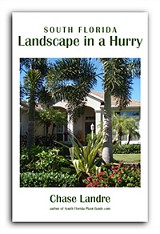Bald Cypress Tree
Taxodium distichum
The majestic bald cypress tree has feathery branchlets of soft needles that add a wonderful finely-textured element to a landscape.
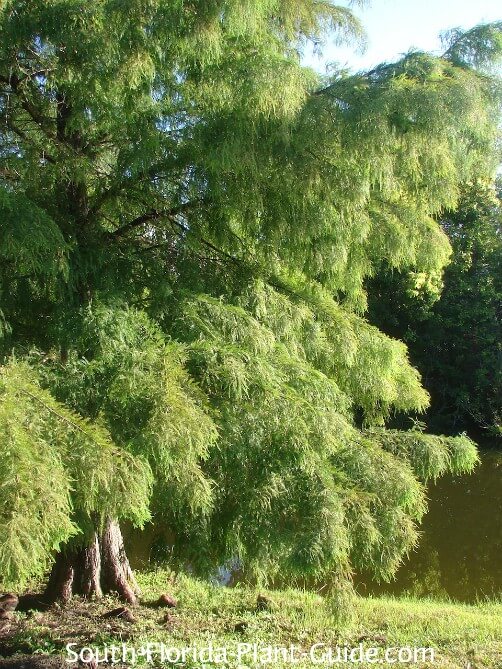
Of all the trees in Florida, cypress withstands flooding better than all other tree species.
In fact, these trees like growing near moving water...on the banks of lakes, rivers, streams, and ponds...and can grow even in swampy areas. No wonder it's Lousiana's state tree.
When planted near water, the tree develops "knees" - roots that grow in knobs out of the ground around the tree. Woodworkers love to use these to carve people-type shapes. The knees' effect in a landscape by a pond is magical.
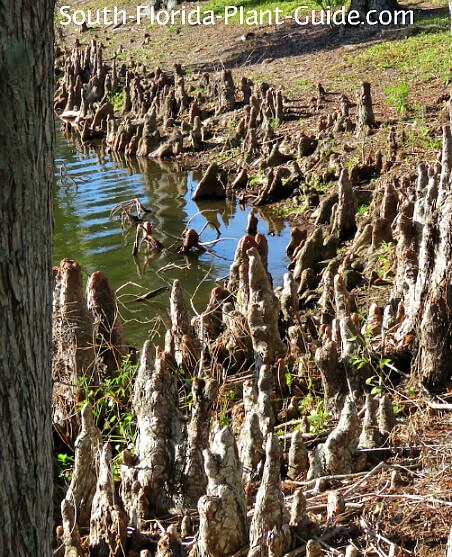
Like its relative, the mammoth California redwood (or giant sequoia), a
bald cypress tree is a tough cookie that can live for centuries. Most
reach about 40 or 50 feet, though they can grow quite a bit larger.
This
big tree can work in a medium-size yard because of its vertical growth
habit. It doesn't develop as broad a canopy as other shade trees, with
its crown width maxing out at about 25 feet on a mature tree.
One of the oldest trees in the world, a bald cypress called The Senator, stood in a park in Longwood, Florida, until a few years ago when a drug addict smoking meth caused a fire that destroyed it.
The Senator, at 118 feet tall with a circumference of 35 feet, was estimated to be 3,500 years old.
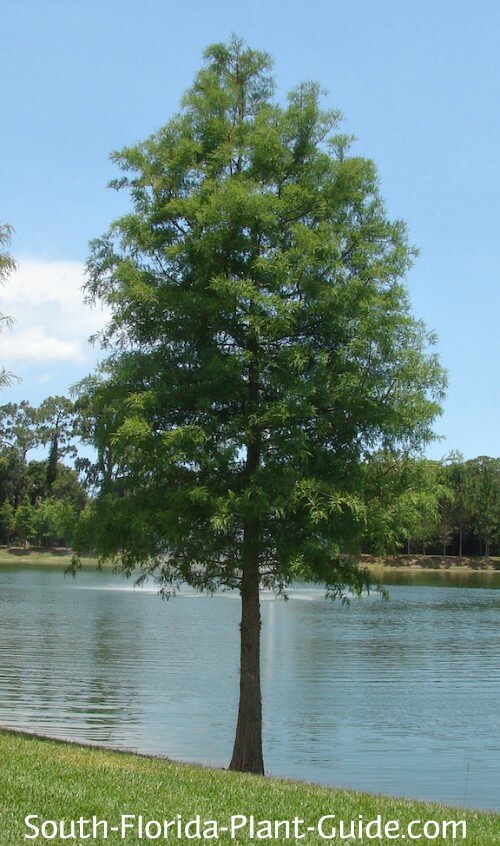
It's unusual for a conifer to be deciduous but this one is - it loses its leaves in winter - thus the name "bald."
And even though this is a magnificent tree - with gorgeous fall color as the needles turn rusty orange - its winter look may not work for everyone as a one-and-only front yard specimen.
Sometimes seen planted in highway medians, this cypress is easy care once established.
The bald cypress tree creates an ideal wildlife habitat, especially when planted near water.
Conifers produce cones, but this tree's cones are small and won't create a litter problem. The cones contain seeds that are popular with squirrels and birds.
Plant specs
This tree is a fast grower, especially when given regular irrigation. It can reach heights of 40 or 50 feet or more.
It's cold hardy anywhere in Florida, and does best in full sun.
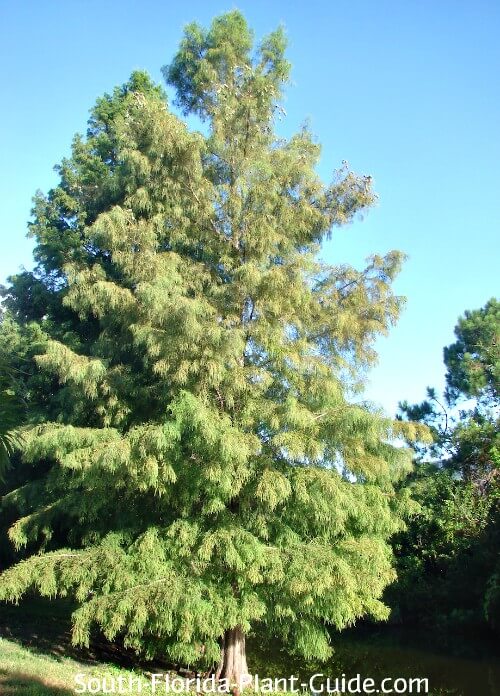
Plant care
If planting in a dry area, add top soil or organic peat moss to the hole when you plant. This isn't necessary if you're planting by the water's edge.
Though they'll put up with dry conditions, cypress trees do best with regular irrigation.
Mulch around the tree's base to retain moisture - but avoid piling up the mulch against the trunk.
And don't allow thick turf grass to grow up right up to the tree's trunk.
Pruning is not needed...the tree's form has a natural beauty that should be allowed to flourish.
Fertilize 3 times a year - in spring, summer and autumn - with a good granular fertilizer.
Plant spacing
Place this tree at least 15 feet from the house.
Come in at least 10 feet from a walk or drive so roots and big branches won't eventually cause problems.
Landscape uses for bald cypress tree
- along a riverbank or at the edge of a pond
- single yard specimen
- mixed with other trees and plants lining the property line
- in groups to grow into a naturalized "forest"
A.K.A. (also known as): Baldcypress
GOOD SNOWBIRD PLANT? NO
COMPANION PLANT SUGGESTIONS: Don't plant anything under the base of this tree. Nearby plants might include copper plant, hibiscus, yesterday today and tomorrow, oleander, firebush, and sea grape.
Other trees you might like: Slash Pine, Weeping Podocarpus
Take a break!
The ultimate guide to low-maintenance plants
and landscaping!
An ebook by
Chase Landre
author of
South-Florida-Plant-Guide.com
Learn more!
Get a greener thumb!
Want to learn more about South Florida planting, watering, fertilizing and dealing with weeds and pests?
See our Gardening How-To section for answers!
Get instant curb appeal!
An ebook by
Chase Landre
author of
South-Florida-Plant-Guide.com
Learn how to get instant curb appeal with fast growing plants and landscaping techniques!
